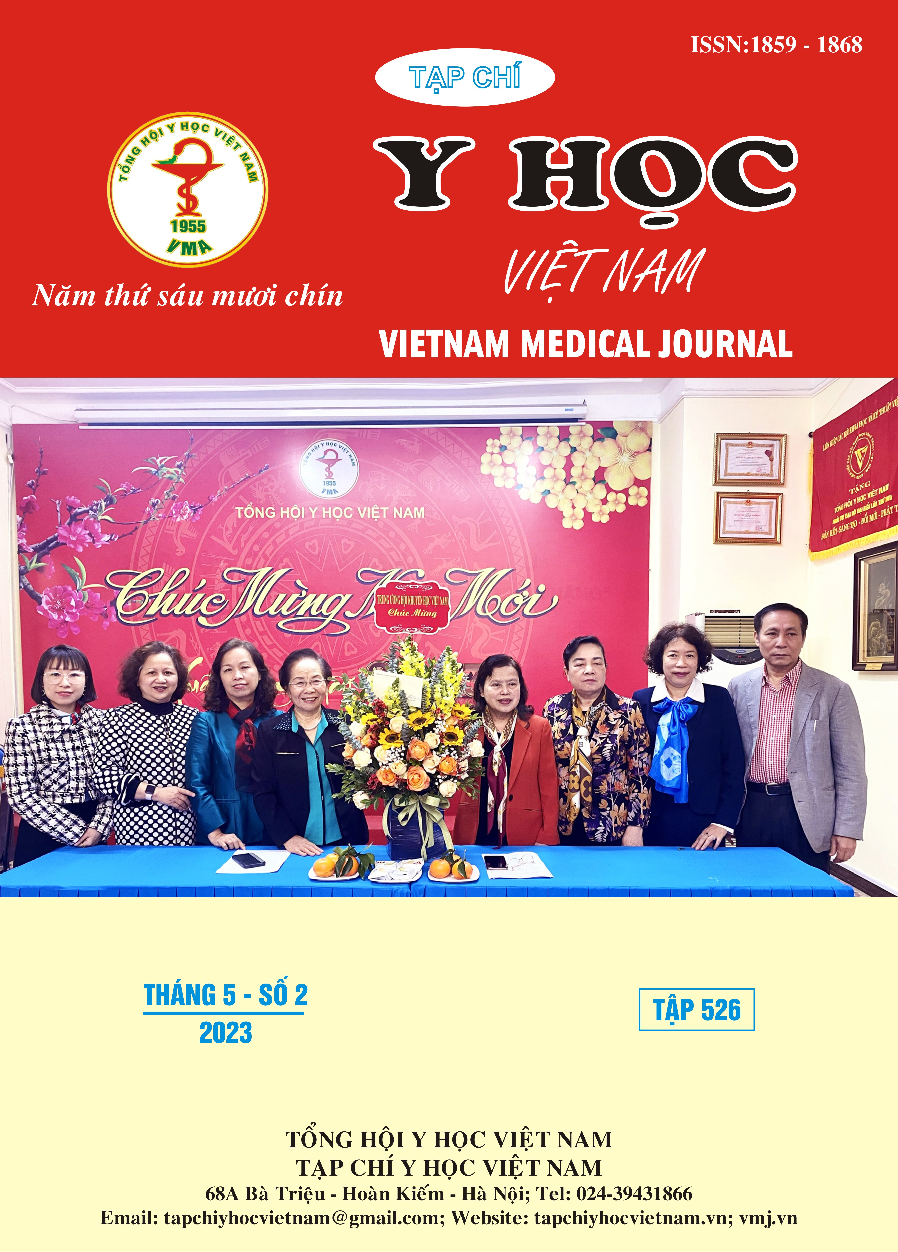EPIDEMIOLOGICAL CHARACTERISTICS, RISK FACTORS OF SCRUB TYPHUS IN SOME KEY AREAS
Main Article Content
Abstract
Objectives: To describe the epidemiological characteristics, risk factors of Leptospira infection in some key areas. Subjects and methods: a cross-sectional descriptive study, sampling and testing by ELISA method to detect anti- Leptospira antibodies on 21,630 serum samples collected from 3 regions of the Northwest, the Central Highlands and the Southwest. Results: T The percentage of people carrying anti- Leptospira antibodies in all 3 regions was 7.37%. In which, the highest is in the Central Highlands at 8.24%, followed by the Northwest region at 7.81% and the Southwest region at 6.05%. This difference is statistically significant, with p < 0.05. The rate of carrying anti- Leptospira antibodies in males (8.15%) was higher than in females (6.51%), the difference was statistically significant, with p < 0.05. The percentage of people infected with Leptospira started to increase over 7.65%, in the age group 36-55, and the highest increase in the age group over 56 years old was: 9.64%. The difference was statistically significant, with p < 0.05. The proportion of Kinh ethnic group with anti-Leptospira antibodies is: 8.68%, higher than that of other ethnic groups, 6.04%, this difference has statistical significance with p<0.05. The percentage of people with Leptospira antibodies was highest among those who worked in the fields (8.72%), followed by soldiers at 7.82% and farmers with 6.28%. Other occupations have lower rates of Leptospira antibodies. For the group of people working in agriculture, military personnel have a higher risk of exposure to Leptospira than other occupations with p<0.05; OR= 3.96. Conclusion: The overall prevalence of anti- Leptospira antibody carriers was 7.37%. There are differences in the rate of infected people across regions, genders, ages, ethnicities, occupations and regions.
Article Details
Keywords
epidemiology, Leptospira, key areas
References
2. Everard J D, E.C.O.R., Leptospirosis in the Caribbean. Rev Med Microbiol, 1993.
3. Centers for Disease, C. and Prevention, Summary of notifiable diseases, United States 1994. MMWR Morb Mortal Wkly Rep, 1994. 43(53): p. 1-80.
4. Case definitions for infectious conditions under public health surveillance. Centers for Disease Control and Prevention. MMWR Recomm Rep, 1997. 46(RR-10): p. 1-55.
5. Nguyễn Hồ Dung Nghi (2013), Điều tra tỷ lệ lưu hành Leptospirosis và các yếu tố nguy cơ gây bệnh liên quan đến nghề nghiệp tại Thanh Hóa, năm 2013, Luận văn thạc sĩ y tế công cộng, Đại học Y tế công cộng.
6. Haraji Mohammed1*, C.N., Karib Hakim3, Fassouane Abdelaziz4 and Belahsen Rekia1, LEPTOSPIRA: Morphology, Classification and Pathogenesis.
7. Bộ Y tế, cục Y tế dự phòng, Bệnh xoắn khuẩn vàng da.
8. Ngũ Duy Nghĩa, Ngô Huy Tú, Phạm Thị Cẩm Hà và cộng sự (2017) Tỷ lệ lưu hành bệnh leptospira và một số yếu tố liên quan tại huyện Thanh Trì thành phố Hà Nội năm 2015, Tạp chí y học dự phòng, tập 27 – số 8, 565-572.
9. Le Thi Phuong Mai, Luu Phuong Dung, Tran Ngoc Phuong Mai et al (2022). Characteristics of human leptospirosis in three different geographical and climatic zones of Vietnam: a hospital-based study. International Journal of Infectious Diseases, 120, 113-120.
10. Van Eys, G.J., et al., DNA hybridization with hardjobovis-specific recombinant probes as a method for type discrimination of Leptospira interrogans serovar hardjo. J Gen Microbiol, 1988. 134(3): p. 567-74.


